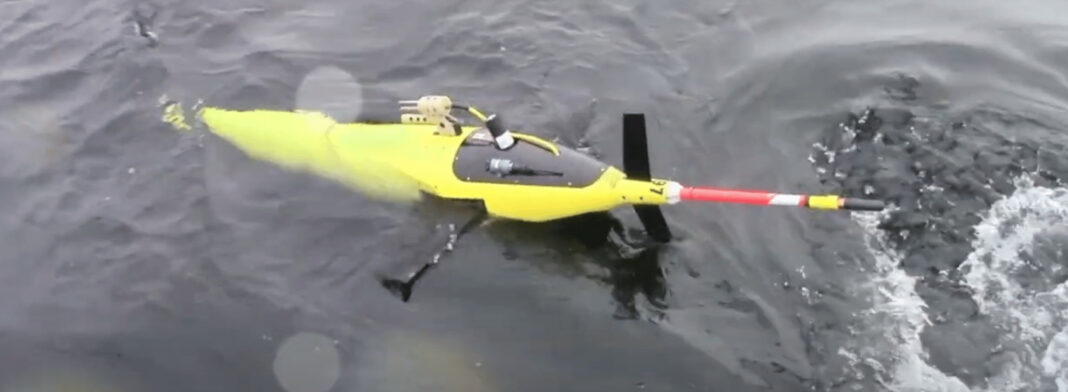A new video put out this week by the University of Washington’s Applied Physics Laboratory shows how scientists are developing special navigation systems that allow unmanned underwater vehicles to navigate the ocean depths for longer periods, gathering scientific data as they go.
A Seaglider UUV was deployed and retrieved during experiments in the Santa Monica Basin off Southern California. The Seaglider essentially “flies” underwater, changing its buoyancy mechanically to descend and ascend on shallow glide paths, according to the Laboratory.
Seagliders have collected data across entire ocean basins, navigating their way by getting GPS fixes when they surface at the end of each dive cycle.
APL-UW Principal Research Engineer Sarah Webster is helping colleagues from the Woods Hole Oceanographic Institution test an acoustic undersea navigation system on the Seaglider that would allow it to navigate the ocean depths for longer stretches without surfacing.
Here’s how it’s done: An autonomous boat transmits its position to Seaglider at regular intervals, and the UUV uses a really, really accurate clock to calculate the one-way travel time and angle of that acoustic signal to fix its position relative to the surface vehicle.
Experiments show that this acoustic system improves Seaglider’s undersea position estimate accuracy compared to calculations based only on GPS fixes at the surface. Eliminating frequent trips to the surface also increases the amount of time Seaglider can spend in the deep oceans.
The research and development of this capability was sponsored by the National Science Foundation and National Oceanic and Atmospheric Administration.
Check out the video below to see how the system works.
(Image credit: APL-UW)

